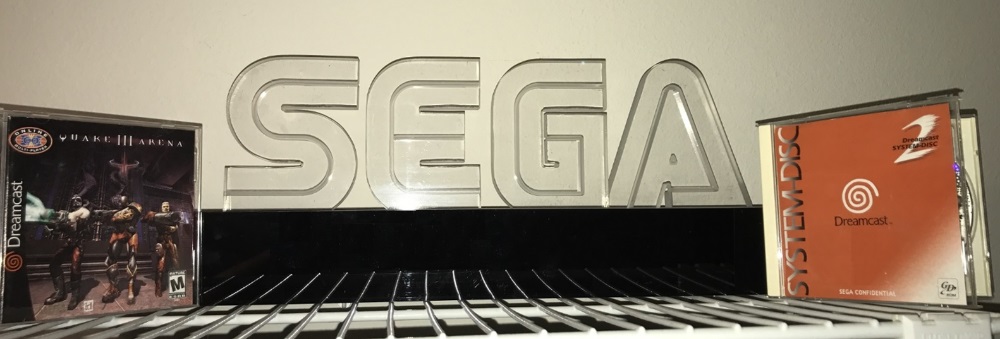
Quake III Arena was and remains to this day one of the most popular online Dreamcast games. It’s no surprise considering the massive following the Quake franchise has had since its debut. Naturally getting the latest game in the series ported to Dreamcast would be a big system seller for Sega’s latest console, so that’s exactly what they did. Not only would it be a good showcase for the pixel-pushing power of the system but it would also be a trail-blazer for online gaming on a console.
I was fortunate enough to be granted an interview with the game’s Senior Producer, Scott Hawkins who not only worked on Quake III Arena but also happens to be the creator of Sega Swirl. In this interview you’ll get a behind-the-scenes look at the development of Quake III Arena and the story of how Scott’s “after-hours passion project” came to be on the Dreamcast.
Q: Let’s start off with your history at Sega. How did you come to work at Sega and what was your role during the Dreamcast era?
“I knew that I wanted to make games, so I got my degree in Computer Science. Despite having the degree, I could not walk into a game studio and say, “Make me your Lead Programmer!”, so I got my foot in the door through the QA department at SEGA.
I knew that if I worked hard and showed my passion for making games that things would work out – and they did. I volunteered to write a program to help burn the EEPROM chips for SEGA Genesis, Game Gear, and Pico games. It had many features it did not need (like an animated SEGA logo screen, encrypted passwords, user account logging, and more), but I thought it was my chance to show that I could program. When that program was completed, one of the people who I worked with was interviewed for an Assistant Producer position in the new SEGA PC group that was forming. She did not get the job and received the feedback that they really liked her, but she was not technical enough. She then said, “I know the perfect person for you” and recommended me for an interview. I got the job and the rest is history. I am so thankful to her for opening the door for me – I do not know how my career would have gone if it was not for that amazing moment! Thank you, Crisi Albertson, – you rock!!
The new SEGA PC group threw me in the deep end and I got to work on MANY PC games for SEGA. The first three games I worked on as an Assistant Producer were PC ports of Comix Zone, Ecco the Dolphin, and Tomcat Alley. The SEGA PC group evolved over the years and we ended up working on titles for console as well. Some of the Dreamcast games I got to work on included SEGA Swirl, SEGA Smash Pack, and Quake III Arena.”
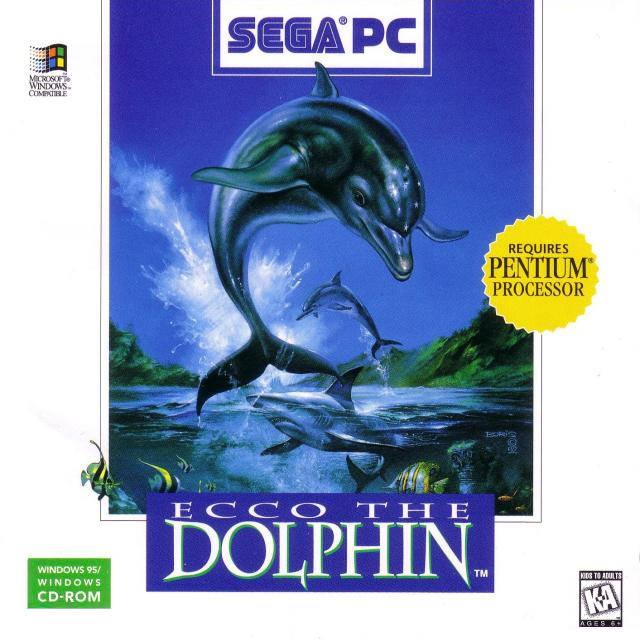
Q: What was the atmosphere like working for Sega during that time? I’ve always considered the early 2000s to be Sega’s prime with so many unique and amazing titles being released. I imagine it was sort of like working at Willy Wonka’s Chocolate Factory, “A world of pure imagination.”.
“SEGA was an amazing place to work. I worked there for 11 years (5.5 years as an on-site employee and 5.5 years as a consultant). It is amazing how creative and innovative SEGA was as a first party company. They created so many original and ground-breaking games. Games like Virtua Fighter really took 3D graphics to a new level when it came out. Samba de Amigo was a crazy fun addictive music game with a funky user interface! Seaman is so out of the box that I would probably have to use the term “wacky”. It was an awesome place to work with so many talented and passionate team members. I still keep in contact with many people from those golden days of SEGA… Go Team Sonic Blue!!
The last game I worked on for SEGA was Condemned: Criminal Origins. We shipped as a launch title for Xbox 360 and we also released a PC port about 6 months after that.”
Q: You were involved with quite a few different games, probably most notably Quake III Arena. What’s the story behind how the game came over to Dreamcast? Did id Software approach Sega or was it the other way around?
“We wanted to create a game that would be an online showcase for Dreamcast. Quake III Arena was identified as the perfect title to make that happen. SEGA reached out to Activision and id Software to acquire the rights to publish the game for Dreamcast. They recommended a talented development team called Raster Productions. All four companies worked together to make Q3A happen for Dreamcast. It was a challenging project, but I am very happy with how things came together.”
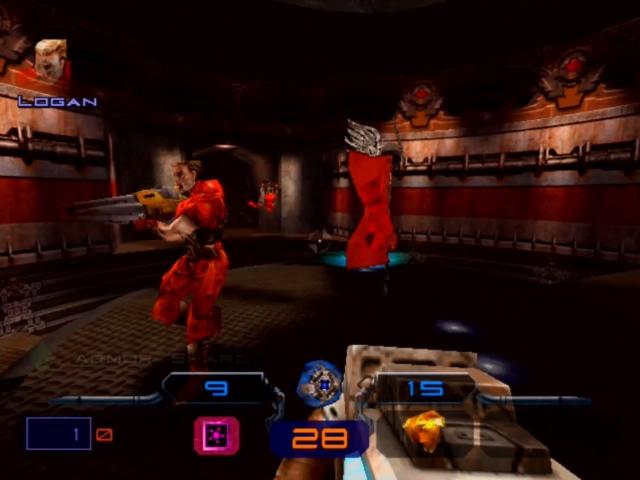
Q: Were there any particular challenges when porting the game over to Dreamcast? Obviously coming from the PC, there were some compromises made.
“Two big challenges were getting the game to run at a high enough frame rate while also fitting the levels into memory for Dreamcast. Some compromises were made in terms of which levels could be supported and the number of players that we could support with online play. I would have loved to support more than four players in an online game. Bumping that number up to 8, 12, or even 16 players would have made a huge difference!! I also would have loved to get additional new maps into the game or a Dreamcast specific level editor would have been amazing as well!”
Q: Were you aware that the game was still played online regularly by the Dreamcast community? Regardless of having many different versions available to play on PC, the Dreamcast version remains popular to this day. I imagine when you were working on the game, you never imagined people would still be playing it online over 15 years later.
“That is such amazing news and it makes me so happy to hear that! I am so proud that I got to work on this franchise – and it means a lot to hear that people are still enjoying the Dreamcast version of the game. That is so cool!!”
Q: Another game you worked on was a fun little puzzle game called Sega Swirl. This is a bit of an odd one as it never got a standalone release. It was included on certain Dreamcast demo discs, Web Browser 2.0, and also in the Sega Smash Pack. How did this game come to be?
“SEGA Swirl is another project that I am very proud of! It started as an after-hours passion project where I wanted to create my own game. I got inspired after attending some sessions at the Game Developers Conference (including one session about Puzzle Game Design). I went home and started programming. After three weeks, I brought in a playable prototype that showed off the basic game mechanics and showed it to my boss, Shinobu Toyoda. He liked the game and told me that I should continue working on it (and reminded me to also continue working on the games I was Producing for SEGA at the same time). The big item that helped me get the product officially approved was getting the game to support play over email. I knew that if we could support play over email on SEGA Dreamcast, we could get online play working (albeit turn-based over email) even before we had matchmaking or game servers available for Dreamcast. When I got play over email working on the PC, the President of SEGA of Japan was coming out to SEGA of America, so I got to give him a demo to show off the game and the play over email feature. The meeting went EXTREMELY well. He stood up at the end of the meeting, slammed his fist down on the table repeatedly, and said “This game… Must be on Dreamcast… By Thanksgiving…”. I was overjoyed and amazed. My game was going to be a first party SEGA game. Then the reality set in – how am I going to add all of the bells and whistles needed to bring this game out as a first party SEGA game. Oh, and the game was only running on the PC and how was I going to port it to Dreamcast. And Thanksgiving was only a couple of months away…
Long story short, we found a team that was available, I negotiated a deal with them to port my code from PC to SEGA Dreamcast, and we worked closely with them to add the bells and whistles needed to make it a first-party Dreamcast game. We even added a Split Screen mode that I had designed, but it did not make sense to support on the PC. This mode ended up being a big hit – and many people preferred this mode as the best way to play the game. We didn’t make Thanksgiving, but the game shipped in December and the game was bundled on several Dreamcast demo discs and the with the Dreamcast web browser (and we also included it with SEGA Smash Pack for Dreamcast – as you mentioned). It was never shipped as a standalone release, but it did make it on over 4 Million SEGA Dreamcast discs. Not bad for something that started as an after-hours passion project!! ;)”
Q: Where did the idea for the snake mascot come from? This is something that wasn’t in the PC version but added to the Dreamcast port.
“The idea for the snake is interesting. We wanted to have a mascot / character reacting to how you play the game. The development team put together many options including a lemur, a snake, a spider on a web, and others. The winner was Swirly the Snake – as we really liked his ability to bend into different shapes. When we did SEGA Swirl 2, we planned to have a mascot for each player / each color theme, but that feature did not make the cut…”
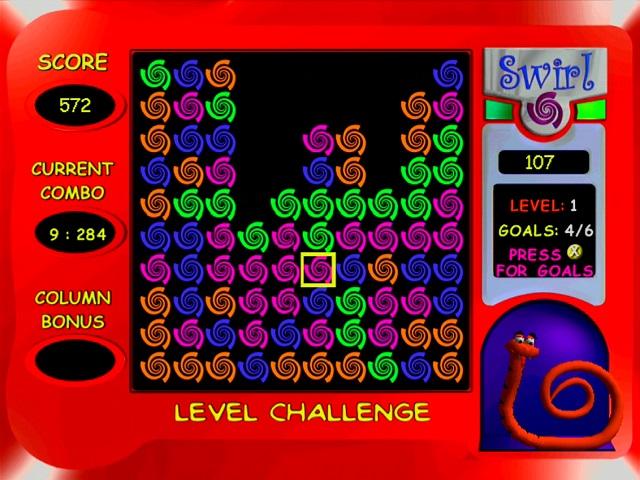
Q: Sega Swirl also had pseudo-online multiplayer which worked through email; an interesting way to do online multiplayer for sure. Maybe a bit of an homage to “correspondence chess” where players would send their moves via letters to the other player. Is there any particular reason why you decided to do it this way rather than a typical client-server-client setup?
“As I mentioned in for the question above, we did not have matchmaking/lobbies yet and no server infrastructure, but the SEGA Dreamcast did have support for email. A friend had given me a copy of Scrabble that you could play over email on the PC and I thought “I could do something like this for my puzzle game…” and these items came together well – as this was a key feature that helped us get the project approved for Dreamcast. One other cool thing is that we shipped my PC version of the game and it is compatible with the Dreamcast version of the game (and vice versa) – so you can play an email game of SEGA Swirl with up to four players on PC or SEGA Dreamcast. Ironically, the way the variables were stored on the PC version of the game is different than the way the programmer who wrote the SEGA Dreamcast code, so I had to write a function which was called “From_Eric_to_Scott” that would convert all of the variables/data to my format. Then the PC version of the game would process the game data and let the player make their move. When the move was done, I would call a different function “From_Scott_to_Eric” that would convert the variables back to the format that the Dreamcast version of the game would want and send off the move. It is pretty cool that we were able to support cross-platform play between PC and SEGA Dreamcast – and we were also able to support this in Quake III Arena as well.”
Q: Any chance we’ll see Sega Swirl 2 any time soon? 😉
“We actually released SEGA Swirl 2 as a GameTap exclusive in 2006. Sadly, that service is no longer available, so it is very difficult to find details about SEGA Swirl 2. Hopefully, there will get to be a SEGA Swirl 3 in the future. It would be perfect for mobile, Nintendo Switch, or other platforms.”
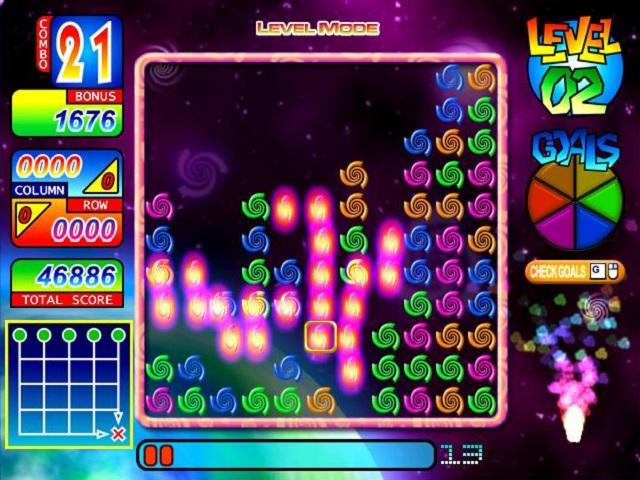
Q: The Dreamcast was a real pioneer when it came to online multiplayer. Some might say it was a little too far ahead of its time. Do you think we would have seen its online capabilities expanded even further had it not been canned by Sega? I’ve always speculated that it could have even had an online store of sorts if the Zip Drive peripheral had been released.
“I agree that the Dreamcast really pushed the envelope with online play and it was definitely ahead of its time. Several of the online features that came out for Xbox Live seemed to be the logical next step from efforts that online features that SEGA was pushing during the days of Dreamcast. If SEGA could have supported more players online and more people already had broadband internet connections at home, who knows how big Dreamcast could have become?! Granted, I know that I am biased, but I believe that Dreamcast should have seen more love and additional third-party support. That could have made a huge difference!”
Q: Let’s close out the interview with your favorite Dreamcast titles. I’m sure you’re a bit biased towards Quake III and Sega Swirl but what are some others?
“Dreamcast was an amazing system and there were so many great games. One of my favorite Dreamcast games that we have not already talked about is Crazy Taxi. It was such an amazing game and it ran so well on Dreamcast. The challenges on the Dreamcast version of Crazy Taxi were so tough – but it kept bringing me back. When we created a SEGA Dreamcast emulator for the PC for GameTap, I brought a build of the emulator running Crazy Taxi on my Alienware laptop to a summit in Japan. I showed the game running on my PC and the people from SOJ were shocked. They asked: Is that a Dreamcast laptop? I told them, no, this is our SEGA Dreamcast emulator running the Dreamcast version of Crazy Taxi on the PC. It ended up being the first commercially released SEGA Dreamcast emulator – and a huge win for GameTap to bring SEGA Dreamcast games to the platform. I was also a huge fan of Soul Calibur, Ready 2 Rumble, and Power Stone. There were so many great Dreamcast games!!”
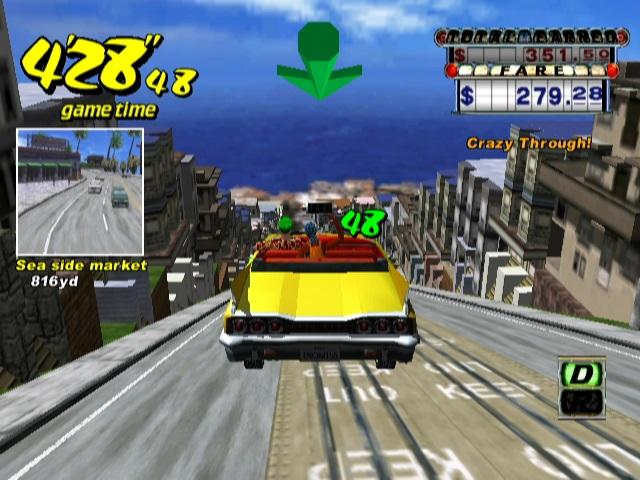
There you have it folks. A very interesting look at the history behind one of the Dreamcast’s biggest online games and one of it’s literal “hidden” gems. A big thanks to Scott for taking the time to answer some questions; without a doubt he’s one of the most passionate devs that I’ve had the pleasure of speaking with so far and it made for a great interview!
Before we conclude, here are a few more questions for Scott that were submitted by readers:
Reader Questions
Q: Was it hard to port the network code over for Quake III Arena?
“At the time when we were bringing Quake III Arena to SEGA Dreamcast, the two biggest challenges we had were running the game over a 56K baud modem connection and the fact that there were different broadband network options to support. We had limited access to people that had high speed Internet connections at home, so this made it very challenging to ensure that the game could work with different broadband connection types. We reached out to family members and industry friends to see if they had broadband Internet connections. I took pre-release versions of the game to their houses to see if our broadband network code worked with their different network configurations. I pushed to include the Dreamcast Broadband Adapter logo on the back of the Quake III Arena Dreamcast packaging – so we needed to make sure that the game worked properly with broadband adapter. One cool outcome from this project is that the code that was created for the broadband adapter support for Q3A became the standard for all future broadband games – and that code was reused on all other SEGA Dreamcast games that supported the broadband adapter. Special kudos go out to David Rudolph for pulling off this incredible technical feat!!”
Q: What features would you add to a SEGA Swirl 2?
“We actually got the opportunity to create SEGA Swirl 2 and release it on GameTap. We included several new features including the ability for the swirls to move in different directions after a combo is cleared, real-time network play, and a Swirl of the day mode that included themed levels for holidays and other key events. I wish more people got the chance to play SEGA Swirl 2. The game was ahead of its time – and it would be great for mobile, Nintendo Switch, and many other platforms. Maybe we will get to make a SEGA Swirl 3 in the future…”
Q: What are your favorite first-person shooters and puzzle games?
“I had been a fan of id Software since the days of Wolfenstein 3D and Doom, so it was a tremendous honor to get to work with id Software on Quake III Arena for SEGA Dreamcast. After working for Activision for 5+ years, I must throw in Call of Duty and Destiny, but I never got to work on either of those franchises.
As for puzzle games, SEGA has released so many awesome puzzle games including Baku Baku, Lose Your Marbles, Puyo Puyo, and Columns. I am also a fan of Tetris, Bejeweled, and Candy Crush. As you can tell, I like to play lots of games – but especially puzzle games and first-person shooters!!”
Q: While working on the Dreamcast port of Quake III Arena, did the dev team prefer using the controller or keyboard/mouse?
“We mostly used keyboard, mouse, and the broadband adapter, but we also felt it was important that people put in a lot of time with the Dreamcast controller. Since this is the way that the majority of people would be playing the game on Dreamcast, it was extremely important that the game work well with this control scheme. We took lessons from Goldeneye and other console FPS titles – and we even included a control scheme option that was more familiar for players who started playing FPS games on console.
I started playing FPS games with just the keyboard (because Doom did not support the mouse back in the day) – and it was a big transition for me to move from keyboard only to keyboard + mouse. Many people feel the same way about jumping from keyboard and mouse to a game controller. I have seen some people play Q3A with some crazy peripherals (like Madcatz’s Panther XL) – if you spend long enough with a specific device, you can be amazed how good you can get with the game.”
Q: Is it fair to play with keyboard and mouse against people with joypad only?
“When the game was first released on Dreamcast, the players going up against PC users had a huge disadvantage because Dreamcast users were (1) new to the game, (2) unfamiliar with the maps, (3) getting up to speed with controls on a Dreamcast controller, and (4) playing on a 56K dial-up connection against experienced PC players that (1) had been playing most of the maps for 6+ months, (2) were using mouse and keyboard, and (3) had much lower ping times because they were playing the game with high-speed broadband connections. Ironically, I would jump on Dreamcast game servers with my Dreamcast and hunt down the low-ping PC players to discourage them from dominating the new Dreamcast players. So yep, SEGA paid me to play Quake III Arena for Dreamcast soon after we shipped the game. How awesome is that?!”
Q: Years after the development, what features would you love to add to Quake III? Either things only possible at this period or more modern features.
“The one feature that I wanted to add even when we were working on the project, but we were unable to support, was supporting a larger number of players online in a game. The Dreamcast version only supports up to four online players in a match. I would have loved to see support for 8 or 16 players online. I think that would have made a huge difference.
Another feature that I would have loved to see would have been cross-platform online play between Dreamcast and PlayStation. It would have been great fuel for the fire of the console wars, but we never got to do it. Ironically, you still see people asking for this feature between PlayStation and Xbox now!!”

Thanks PC, for a great interview and an insight from that period of time. I recently played SEGA Swirl for the first time, when I was configuring my modem to play Monaco GP Online.
this was a really cool interview
Great interview! Scott seems like a stand-up guy.
You should send him a dreampi, so he could play Q3A online with us on fridays.
He has a broadband adapter. He said he might join sometime. 🙂
Another great interview PC
Enjoyed reading the interview!
Wiiiild .. I wonder if Scott is aware the embarrassment that is that Smash Pack Genny emulator L0L
Nice! I hope to see Sega Swirl 2 actually released or shared soon!